News from a NASA intern
On this page
About Steven
Steven McCabe, one of the four NASA interns on the inaugural New Zealand Space Scholarship talks about his 10-week project designing small sensors to explore hard-to-reach areas on Mars and the Moon. He also shows us some of the other amazing research happening at the NASA Ames Research Center in California.
Steve McCabe at Mission Control at NASA's Johnson Space Centre in Houston.
Designing planetary sensors at the Ames Research Center
It’s been eventful here at NASA Ames Research Center so far! Two weeks in and the time is flying by. After a couple of orientation days and a series of productive meetings with my mentors, I’m now gaining some momentum on my assigned project. In brief, NASA are wanting the ability to deploy clusters of small sensors to explore regions of interest on the Moon or Mars, where landing and operating a rover might be too risky or difficult to negotiate. The sensors will report on things like temperature and methane content and may provide imagery too. My project involves building a computer model that will assist scientists in determining where the best location to place the sensors might be from a performance perspective and given the complex terrains they’ll likely be in. I think it’s going to keep me busy.
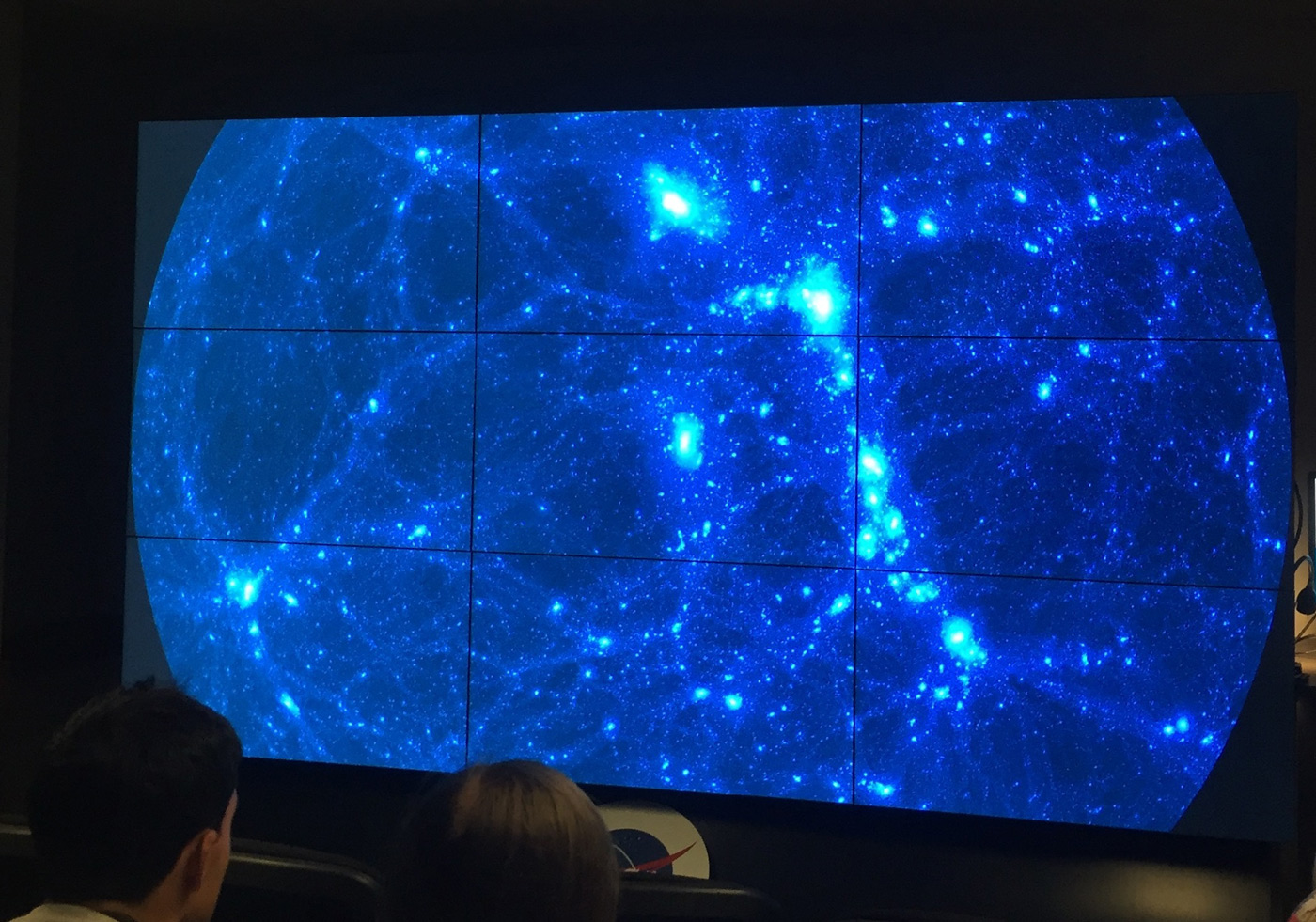
A view of a NASA simulation showing how the structure of the universe may have evolved over billions of years.
Photo credit: Steve McCabe
I’ve also managed to get a glimpse of other projects that are happening here including some of the simulations being modelled on NASA’s Pleiades supercomputer, the experimental D-Wave quantum annealer, and Astrobee – a cube-shaped robot that can manoeuvre itself within the microgravity environment on the ISS. I also attended a fascinating talk on the Artemis programme by James Green. He talked about the renewed interest in returning to the Moon and where we might be able to set-up and extract water once we get there. An abstract of the talk is here but the video recording should be available online soon and will be well-worth a look.
Abstract of the talk by James Green(external link)
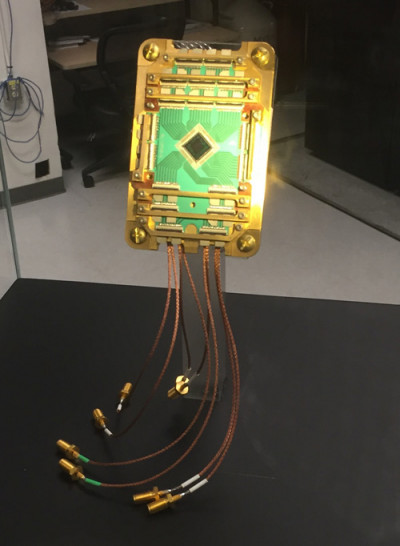
Photograph of a previous generation quantum annealer chip that NASA Ames used for investigating the role quantum computing may have in future missions.
A tour of the NASA Ames Research Center
I’m now over halfway through the internship and have just four weeks left. Work on my project has been going well. I’ve mostly been writing code in Python, a computer programming language that I’m using to model how NASA’s wireless sensors might behave on Moon and Mars terrains where, for example, rocks and craters will impact their ability to sense the environment. It’s a challenging problem. It’s making me put into practice some of the math I learnt some years ago in my undergraduate studies at Waikato University. I’m certainly enjoying having the freedom to work on the problem under the guidance of NASA experts.
The land area that NASA Ames covers is extensive; it’s spread-out over 800 hectares at Moffett Field, Silicon Valley, and lies within just a few minutes’ drive to the likes of Google, Tesla, and Stanford University. An enormous metal skeleton left behind from the old 1930’s naval airship hangar is visible from much of the base and is a well-known landmark in the area.
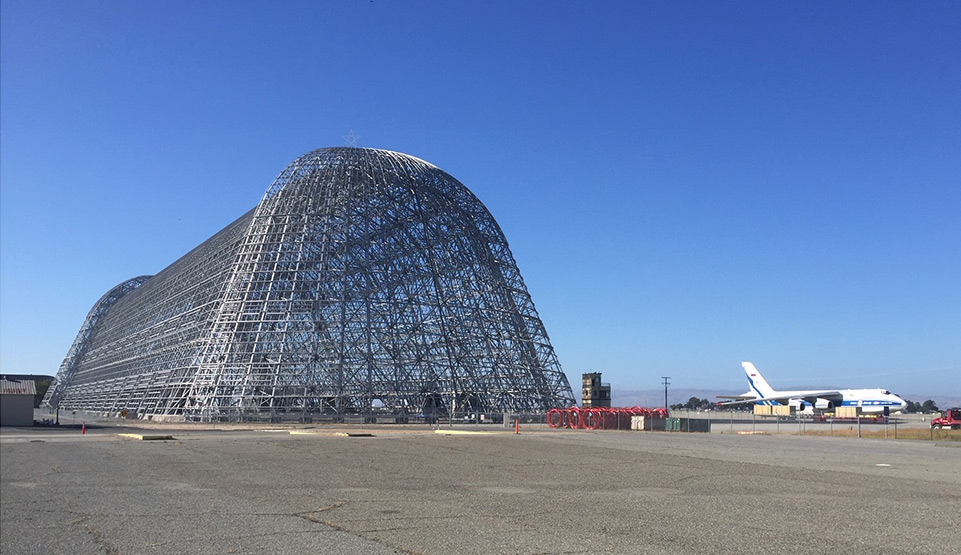
Photograph of hangar One, an old airship hanger that resides near the airfield at Moffett Field.
Photo credit: Steve McCabe
The world’s largest wind tunnel resides here too and it’s certainly hard to miss. It’s large enough to fit and test a full-scale Boeing 737 aircraft.
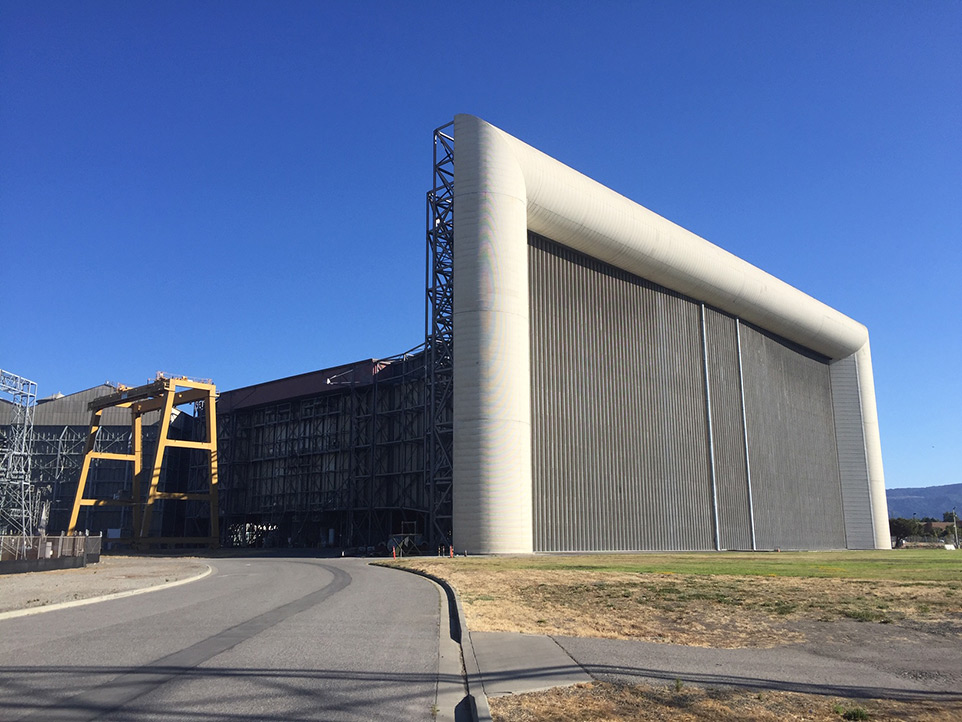
A view showing the inlet of the world’s largest wind tunnel, used for testing and refining aircraft and spacecraft designs.
Photo credit: Steve McCabe
The NASA Ames Research Center have been running numerous tours for the 250+ interns here and I’ve been trying to attend as many of these as I can. A couple of weeks ago, a demonstration of an experimental rover was given in a Mars-like landscape that’s here on base. The four-wheel drive, all-wheel steering rover was shown to traverse large rocks while maintaining traction of each of its four wheels. It was quite impressive to see in action. It was designed to carry equipment that allows it to drill into the ground beneath it and provide an analysis of the soil samples it collects.
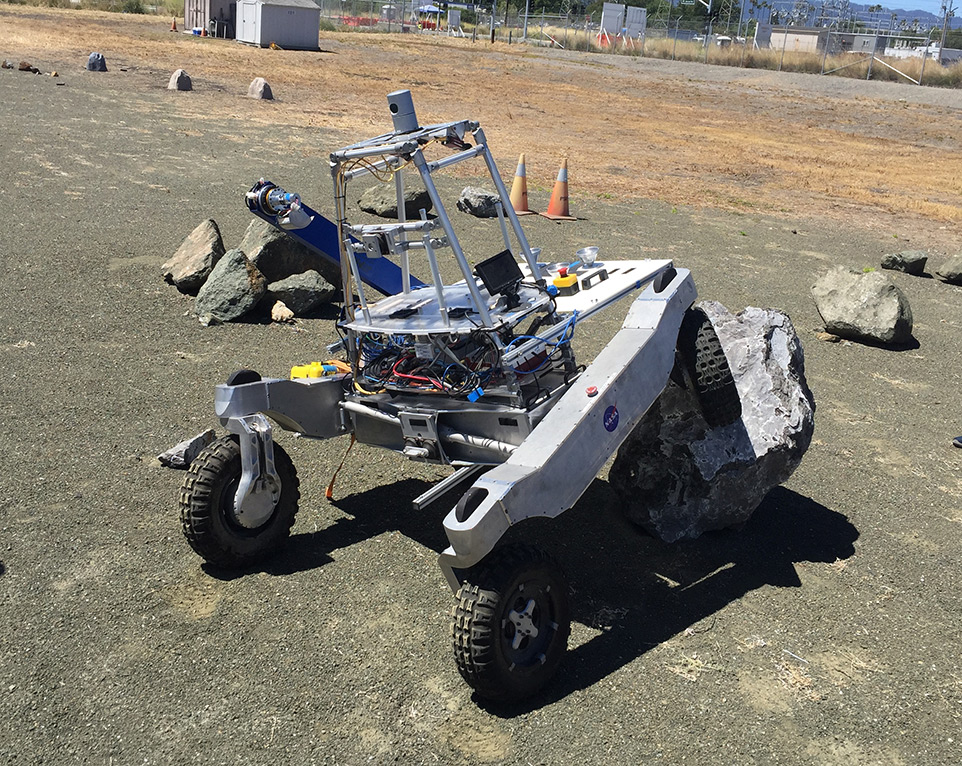
The experimental rover named “K-REX2” as seen manoeuvring over a large rock within NASA’s “Roverscape” test facility. The rover was developed to help NASA scientists test new tools and techniques that could be used in the search for signs of life on other worlds.
Photo credit: Steven McCabe
If you’re interested in finding out more, take a look at https://www.nasa.gov/ames/arads(external link). I also toured the Fluid Mechanics lab. There, we were shown around a small wind tunnel as well as a set-up used to demonstrate the aerodynamic effects of the NASA space shuttle on re-entry.
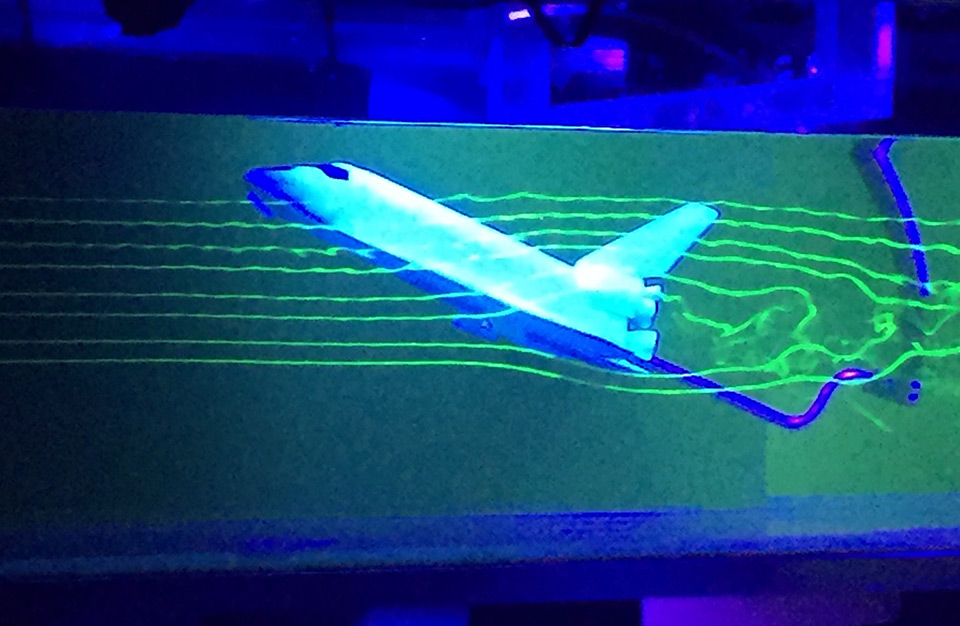
A simplified demonstration showing the fluid flow around a small-scale model of NASA’s space shuttle.
Photo credit: Steven McCabe

